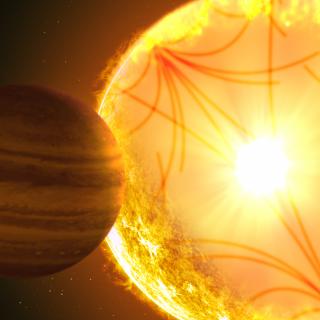Bibcode
Barreto, A.; Cuevas, E.; Pallé, P. L.; Romero, P. M.; Almansa, F.; Wehrli, C.
Bibliographical reference
Atmospheric Measurement Techniques Discussions, Volume 7, Issue 4, 2014, pp.4093-4121
Advertised on:
4
2014
Citations
0
Refereed citations
0
Description
A 37 year long-term series of monochromatic Aerosol Optical Depth (AOD)
has been recovered from solar irradiance measurements performed with the
solar spectrometer Mark-I, deployed at Izaña mountain since 1976.
The instrument operation is based on the method of resonant scattering,
which presents a long-term stability and high precision in comparison to
other instruments based on interference filters. However, it has been
specifically designed as a reference instrument for helioseismology, and
its ability to determine AOD from transmitted and scattered
monochromatic radiation at 769.9 nm inside a potassium vapor cell in the
presence of a permanent magnetic field is evaluated in this paper.
Particularly, the use of an exposed mirrors arrangement to collect
sunlight as well as the Sun-laboratory velocity dependence of the
scattered component introduces some inconveniences when we perform the
instrument's calibration. We have solved this problem using a
quasi-continuous Langley calibration technique and a refinement
procedure to correct for calibration errors as well as for the
fictitious diurnal cycle on AOD data. Our results showed that
calibration errors associated to the quasi-continuous Langley technique
are not dependent on aerosol load, provided aerosol concentration
remains constant throughout the day, assuring the validity of this
technique for those periods with relatively high aerosol content
required to calibrate the scattered component. The comparative analysis
between the recovered AOD dataset from Mark-I and collocated
quasi-simultaneous data from Cimel AErosol RObotic NETwork (AERONET) and
Precision Filter Radiometer (PFR) instruments showed an absolute mean
bias ≤ 0.01 in the 11 year and 12 year comparison, respectively.
High correlation coefficients between AERONET/Mark-I and PFR/Mark-I
pairs confirmed a very good linear relationship between instruments,
proving that recovered AOD data series from Mark-I can be used together
PFR and AERONET AOD data to build a long-term AOD data series at
Izaña site (1976-now), suitable for future analysis of aerosols
trends and inter-annual variability. Finally, the AOD preliminary trend
analysis in the 29 year period from 1984 to 2012 with Mark-I AOD
revealed no significant trends. However, we detected a negative
significant trend of 0.047 decade-1 during the period
1984-1993.
Related projects

Helio and Astero-Seismology and Exoplanets Search
The principal objectives of this project are: 1) to study the structure and dynamics of the solar interior, 2) to extend this study to other stars, 3) to search for extrasolar planets using photometric methods (primarily by transits of their host stars) and their characterization (using radial velocity information) and 4) the study of the planetary
Savita
Mathur